Chicago.

Chicago.

Chicago.
There are a lot of things that went through my head when I won round fifteen of Grand Prix Chicago, cementing my invitation back to the Pro Tour. I was paired against Chapman Sim of Singapore.
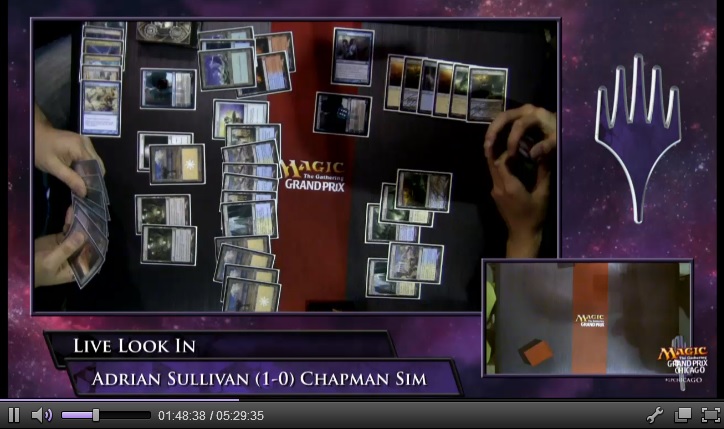
I won it, and it made me think back…
First it was back to earlier that day. I’d just lost a disastrous match against Ben Friedman who was playing B/W Midrange. I’d started out the day as the number one seed, won my first round, and then lost two in a row. The loss to Friedman was particularly bad. I’m not sure where my head was, but it certainly wasn’t in the game. I don’t know what would have happened if I’d been playing that match at all well, but I do know that I shut the door on the chance to win it.
I can’t remember how Ben put it, exactly, but he could tell I wasn’t in my game, and he made a comment about it. I knew he was right; I felt like I spent the whole game playing quite sloppily, not just making mistakes (bad scrys, primarily), but also losing track of where we were in a turn, not being sure if I’d laid a land.
It was bad.
It is hard to go from undefeated and suddenly have your back against a wall. A single loss and it would be over – the hope to be back on the Pro Tour. It had been years since I’d been on the Pro Tour.
The Pro Tour matters a lot to me. I wanted this.
I would have to go 3-0 to make it.
I took a deep breath. I walked it off. I took a few minutes to have a belated interview with Nate Price in coverage.
I just did what I needed to do change where my mind was at.
3-0.
“That’s just like winning the Top 8 of a PTQ,” I thought to myself. “I’ve done that a ton of times.”
It was true, sure. But it was mostly just trying to refocus on what I’d wanted. I’ve been working to get back on the Pro Tour for years. My last Pro Tour was Pro Tour Hollywood 2008, where I placed 60th. Basically, as soon as I started grad school, I wasn’t able to give anywhere near the time needed to Magic to be able to be playing at the level needed to stay on the tour.
But still. That was six years ago.
In that time I’ve had a lot of close calls. Starting out 10-0 and then not qualifying would have been all too heartbreaking.
When I won that last round, I felt the kind of satisfaction that comes when a weight is finally lifted. I called my girlfriend Kat, and I could feel my voice quavering under the emotion of it all; she had been there with me, in Chicago, near when we first started seeing each other, when I qualified for the first Pro Tour Valencia, playing the Time Spiral Block Constructed version of Baron Harkonnen. I wished that she could be there with me now, but even though she wasn’t, I could feel how proud she was of me and how much she loved me, and that was almost enough.
I waited to hear the results with fellow Madisonian and friend Ben Rasmussen. Some people at my record weren’t going to make it. With the size of the event, the tournament had been split, so my excellent tiebreaks from Day One were lost when the tournament was recombined. I was still qualified, but I wanted to win the whole thing.
Hearing my name called for Top 8 meant a lot. Even though getting back to the Pro Tour was the most important thing, what I wanted to do now was win the whole thing.
I would get stopped in the semifinals by Jadine Klomparens. In our match, she would show just how competent a pilot of Mono-Black Devotion she was, and after she defeated me, I was certainly rooting for her to win the whole thing (no offense to Tyler Blum).
And there it was. The tournament was over, and even though I didn’t have the trophy, I was happy. This was my second GP Top 8, and while I certainly had my eye on a trophy even from the beginning of the event, putting a GP win on the resume was less important to me than the invite.
On the ride home, I reflected a bit on my weekend.
I played the same deck that I chose for both the SCG Invitational and the SCG Standard Open. Here is my list:
Creatures (1)
Planeswalkers (5)
Lands (26)
Spells (28)

One of the big questions that I had at the beginning of the week of Grand Prix Chicago was a question that I think many Sphinx’s Revelation decks were having: Detention Sphere or no?
This is actually a really difficult question. A part of the difficulty is the question of Black/Green. I explored this issue last month, and there isn’t a simple answer. If you have Detention Sphere, you are faster, you have a difficult-to-respond-to card for black and red. But, at the same time, Abrupt Decay becomes an utter monster to you, and Deicide, more and more, is very real.
Then, of course, is the other half of the question, which really breaks down to two things:
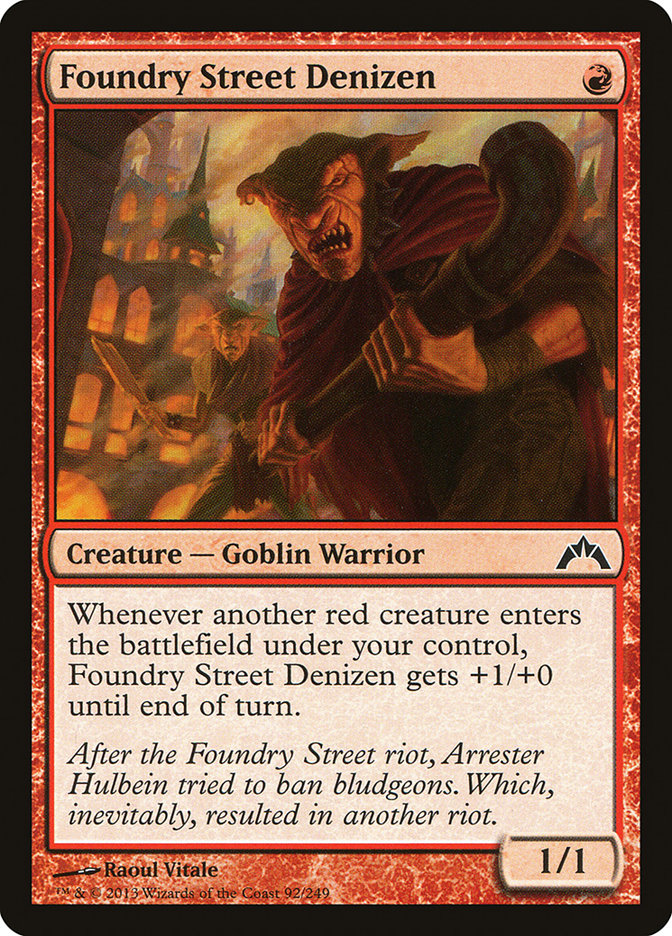
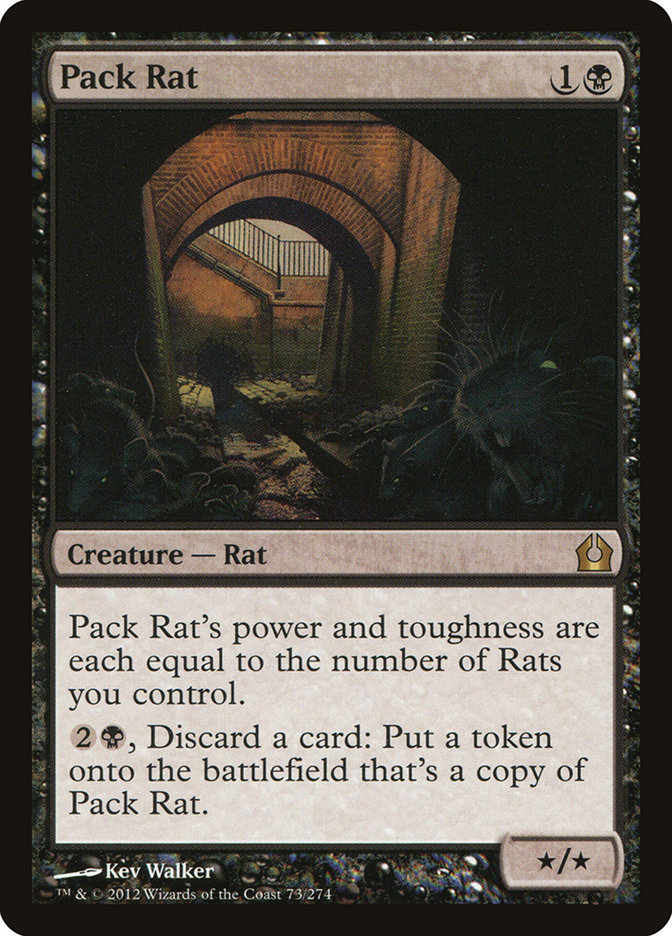
Detention Sphere is really quite good against aggressive red decks of all sorts. And Detention Sphere is good against Pack Rat – well, at least so long as the Pack Rat doesn’t have a friend in green mana.
Conundrums.
Tom Ross’s win of the Season Two Invitational was bound to be influential, as was the win by a different Mono-Red Aggro in the Standard Open at Columbus. However, there was also this deck to reckon with:
Creatures (8)
Lands (23)
Spells (29)

I’m not sure if you know this, but this deck, properly played, is a nightmare for the red aggressive lists. Here’s how you lose playing with it: you try to race the little red monsters. Here’s how you win: you try to kill everything.
Want to know how to manage that:
Out:




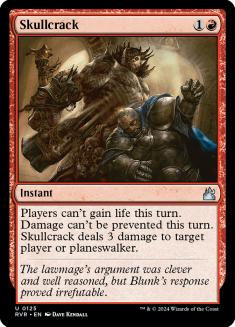



In:
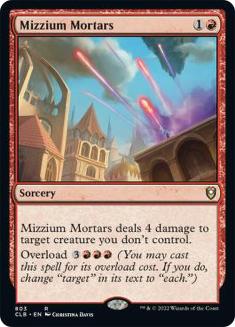


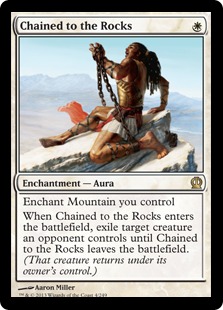
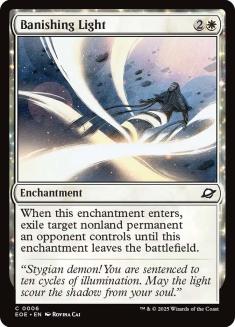

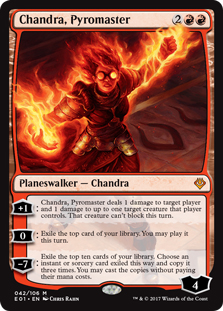
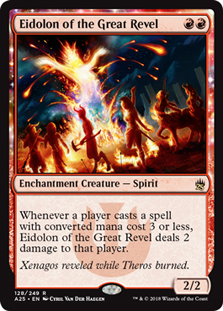

The specific ninth card to cut after boarding depends on their build. It could be scaling back the Chandra’s Phoenix by one, not boarding in Chandra Pyromaster or not boarding in one of the Eidolon of the Great Revel, or cutting Warleader’s Helix, basically completely depending on what the other red deck is doing. Played properly and conservatively, at some point, barring screw/flood, the burn deck just kills with something or other, and wipes the floor with all of the puny little critters.
In my opinion, given the success of both red decks in general and this burn deck in particular, I was going to see a ticking up of anti-red aggro strategies, as many people would want to beat the red aggro decks, and they would get enough incidental use from those cards to affect their burn matchup. To me this meant more Black Devotion, more Blue Devotion, and more burn.
I knew that my deck was weak to, say, Boss Sligh, when it was built as a Planar Cleansing deck, but it was also weak to Boss Sligh when it was built as a Detention Sphere deck. If I couldn’t beat that deck with the stronger card against it, why bother trying?
With all of that, I opted to not change a single card of my 75 from the week before.
Now it was time to battle.
Here was my path to the Top 4.
Round 1: Bye
Round 2: Bye
Round 3: Black Devotion W 2-0
Round 4: Burn W 2-0
Round 5: Black Devotion W 2-1
Round 6: Burn W 2-1
Round 7: Burn W 2-0
Round 8: Blue Devotion W 2-0
Round 9: Black Devotion with Green W 2-0
Round 10: Burn W 2-1
Round 11: Esper Control L 1-2
Round 12: Black/White Midrange L 1-2
Round 13: Burn W 2-1
Round 14: Blue Devotion W 2-0
Round 15: Esper Control W 2-0
Top 8: Blue/White Control W 2-1
Top 4: Black Devotion L 0-2
You might notice that this is not a particular diverse set of decks.
Let’s break it down:
Sphinx’s Revelation decks: 2-1 (5-3 in games)
Pack Rat decks: 3-2 (7-5 in games)
Skullcrack decks: 5-0 (10-3 in games)
Thassa decks: 2-0 (4-0 in games)
Well, not only did I dodge Boss Sligh (and every other deck with a two-power one-drop in the main), but I also didn’t run into any of the many midrange decks like Monsters (of all varieties), Bant Planeswalkers, or anything else. While I’m glad to have dodged weenie decks, I wouldn’t have much minded seeing those midrange decks.
Obviously, the matchup against R/W Burn and Blue Devotion went very well. I also felt like the Sphinx’s Revelation deck matchup is a good one. (An important note: when I talk about “this deck,” I am referring to Elixir of Immortality builds in general, but my version in specific.) Let’s look at matchups.
Versus Black Devotion
Pack Rat provided something of a larger difficulty, obviously.
The previous week, I’d lost playing for Top 8 of the Standard Open, up against Owen Turtenwald playing Mono-Black Devotion. At Chicago, I lost to Jadine Klomparens playing the same deck. If I add in the two tournaments in Columbus, our revised Pack Rat matchup goes like this:
6-4 in matches (15-9 in games)
I think the important thing to note, though, is that I lost against good players who had a good plan for Sphinx’s Revelation decks. The matchup actually boils down to a two-stage matchup:
(1) Surviving the early game – This stage lasts from the beginning of the game through turn five or six, and onwards until the moment you end their turn with no fear of dying on their next turn.
(2) The Big Rev – Once you get that single Big Rev off, the game is generally over unless they are a Rakdos’s Returns deck.
A lot of people advocate having counterspells for this matchup. I basically feel like you need to have minimal counterspells for Mono-Black Devotion. Your countermagic is not very effective versus their discard, and you are going to have to actively respond to their threats. This means that for every Desecration Demon, Pack Rat, and Lifebane Zombie, it is another moment where you’re going to have to generally tap out to do something, putting you out of position to counter whatever is next. The other option, then, is to not have sufficient mana to stop them from double-threating with a discard for your counter and a follow-up threat. It is valuable to have countermagic floating in your sideboarded deck to have available in the late, late game… but this is only something you should count on once the game is well in hand. In my build, for example, I only keep in Essence Scatter and Render Silent after board. I could imagine an argument for Negate, based on its cheap cost, but I only really find that compelling versus Rakdos’s Return builds.
I’ve found that the better plan is just to break everything and draw cards. Some cards, like Azorius Charm and Celestial Flare, are not very good at ‘breaking things’ because they can be discarded before you can use them, but even though a card like Last Breath can pre-emptively kill something, it fails to hit Lifebane Zombie. (Incidentally, one of the reasons that I think that the Nightveil Specter build is worse against you is that they have better targets for your removal, and they give you much, much more time, even if they are acquiring card advantage.)
Siding out cards like Jace might feel good because “the Jace just dies,” but it doesn’t matter. They are taking time out of their turn to get rid of the Jace, even if it is just activating a Mutavault, and this is buying you precious life points. All you are trying to do is untap with a Revelations in play at a safe life total. At that point, even if they get multiple Underworld Connections going and they have sideboarded to optimize against you, they generally just can’t keep up with your card engine. This is a big reason that Elixir of Immortality is so important
My losses against the deck definitely have me thinking I should probably be playing an additional anti-Black Devotion card or two. I’m not 100% sure of what I’ll be playing yet, but I’m thinking I might find room for Domestication, or something else.
The Sphinx’s Revelations Mirror
There is one point against Chapman Sim where he has out an Aetherling (held down by my Debtor’s Pulpit) and I’ve just resolved a Jace, Memory Adept. I activate the Jace to draw a card and mill Chapman Sim for one. The commentators are surprised, wondering why I don’t go for the kill. At another point, they were surprised when I discarded a Jace, Memory Adept in the mirror.
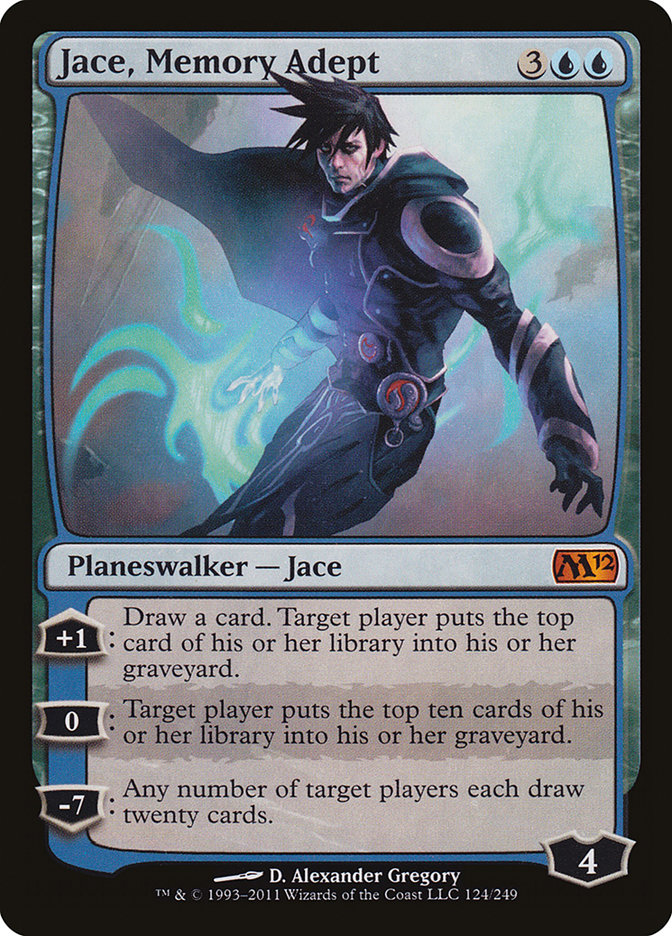
If you are playing an Elixir of Immortality deck, you do not need to go for the win. Going for the win is very risky in the UW mirror, no matter which flavor of Sphinx’s Revelation deck you are. Tapping mana on your turn puts you out of position to win a counterspell war. If they stop your threat, you could be on the receiving end of a problem.
So, in the case of the discarded Jace, Memory Adept, even though it is one of the absolute best possible cards in the mirror, it did not look to me that it was reasonable to begin that fight any time soon. I had two or three cards to discard, and I was going to keep all of my answers before I bothered with a threat.
In the case of activating the Jace, Memory Adept’s +1 ability instead of the 0 ability, the situation was simple: the game wasn’t fully in my control yet. The Jace may have represented a three-turn clock, but it also failed to be meaningful at all if it got answered. On the other hand, a +1 activation would just push my advantage a little bit further so that if things got out of hand at some point, I’d still have plenty of resources available.
A lot of people make up general rules like “never counter Jace, Architect of Thought” or “only counter Sphinx’s Revelation when it is for X amount or more,” but the truth is that this matchup is more complicated than that. At some point, you are going to end up having a showdown. You want to win that showdown.
The only time that you should ever leave yourself vulnerable is if you have to. I’ve dropped Aetherling into play with no mana open before, but I wasn’t happy about it. I did it because I had no counters, had no card draw, and my opponent was already ahead. “Maybe you don’t have it” is only a good call when you are desperate.
The better rule, if you must have a general rule. is this:
Give up on a fight if losing the next fight will mean you lose the game.
This will mean losing wars sometimes over a valuable spell you want to have resolve. This includes for finishers. Pretend, for example, that you tap out or nearly tap out to win a fight for Jace, Memory Adept. If they drop an Aetherling and win that fight, it is likely that they will win the game.
A part of this means, then, that the campaign towards that showdown matters a lot. Jace, Architect of Thought is not a card to use a counterspell on unless you have extras in reserve, because you need to win the next fight. However, if you have that card in reserve, it can be very worth fighting so that you don’t lose an important fight down the road.
This is a part of the reason that land drops are so important. You can’t even start fights unless you have a great deal of mana, unless you are so committed to rolling the dice that your hand is just terrible. This is also a reason why Elixir of Immortality is just so good. When both players are in a position that they are going to be expending their countermagic, a resolved Elixir can mean you have a never-ending font of counterspells. I’ve won games where my opponent resolved Aetherling in game one, and I had no answers to it. I just outraced it. I’ve had the same thing happen with ultimate on Kiora and Elspeth. If you have the Elixir, you can commit to just having a never-ending stream of resources, and your commitment to making that happen is only a single mana at the beginning of a fight.
The subtle details matter, too. My loss against Esper was completely based on a game-one decision to use two Mutavaults when I didn’t need to. It was very late in the game, but it meant I lost two lands, and this cascaded into a net loss of four cards from to subsequent Sphinx’s Revelation, and also making two dead cards live from my opponent.
Similarly, in my quarterfinals win versus Steve Wise, a moment of miscommunication almost cost me the game. He was swinging for the kill with Elspeth tokens and an Archangel of Thune in play during game two. He cast Sphinx’s Revelation for one card, which would set up a kill. I said “okay” meaning to acknowledge that he was casting the spell, and when he moved to get tokens, I told him to stop because I was countering (with four mana left, a decision between using Dispel and Dissolve). He generously let me continue, and I went on to win that game and that match, but I’m still not sure what might have happened if he asked the judge to enforce my “okay” as an agreement that the spell resolved; that wouldn’t have been my intention, but I could certainly see that argument. The game was in the balance in that moment, and doing the correct thing mattered greatly.
The mirror match is an incredibly intricate thing. All of the details are important. The overall fight is one of securing weapons for the showdown. The secondary fight is being able to trump them in case of a lost showdown. The overarching character of the match, though, is not being in a position where you are out of resources. This is why both card drawing and a card like Elixir of Immortality are both so critical, and so easily misunderstood as to when to fight over them (or when to not get in the fight at all).
Versus Burn
As you can see, above, I have a great match versus R/W Burn. However, what you can’t see is that very nearly every match is played teetering on the edge of defeat.
What it really boils down to is that they are packing so much direct damage and their access to Skullcrack (whether main or board) can be so devastating, you can’t afford to make plays you might normally make. Interestingly, though, neither can they.
By way of example, on turn six, you might normally just fire off a Sphinx’s Revelation for three, expecting that this might put you out of range against a different deck that attacks your life total. Instead, they Skullcrack you, and even though you draw a number of cards, so few of them might be counterspells that you are actually just that much closer to the grave. It is better, then, to wait. Conversely, your opponent might have Warleader’s Helix at the same time, and tap four of their five mana to cast it, thus giving you the opportunity to cast that Sphinx’s Revelation and gain the life, while their Skullcrack sits in hand unused because of a lack of mana.
The game ends up becoming a waiting game for both of you.
Here, having patience for your lifegain matters a lot. And, in addition, you have to be willing to throw away cards to gain life. Mutavault being hit by Last Breath might be the only thing that keeps you alive, even if you are losing cards for the privilege.
The thing to remember is that losing cards basically doesn’t matter. Every time that your opponent shoots you in the face, they are losing a card. That card is gone for good. It is important not to think of casting your Last Breath or your Azorius Charm (at lifelink for 2 or 4) as “countering” anything. You need to remember that you, also, are losing a card. In both their case and in your case, this loss is worth it.
Take the backbreaking card in the matchup, Trading Post. Every burst of life comes at the cost of the card. You could think of these as preemptive (or after-the-fact) counterspells for Boros Charm. But, more accurately, what you are doing is losing cards for the return of moving yourself out of the place where your actual loss of the game is imminent. At a certain point, once you are out of that danger zone, the idea that you’ve “countered” a Boros Charm ceases to be relevant. In fact, you might actually allow Boros Charm or Warleader’s Helix to resolve even though you have the countermagic. What is relevant is that by losing those cards, you’ve returned the game to a normal axis of Magic where they are going to have to mount a consistent source of damage. At this point in the game, discarding a card every turn to “counter” a future Boros Charm might actually lead you to lose a resource (even if just a land) that you need!
Versus Blue Devotion
Game one and sideboarded games are very different affairs here.
In the first game, Blue Devotion is very unlikely to have any countermagic, so you can almost assume that your cards will go through unmolested. There is a slight risk that this won’t be true, so there is a need for some degree of caution, but ultimately, you are just trying to stop their ability to kill you on the next turn.
In the second game, however, you have to balance their ability to potentially fight you from a position where they can assume a controlling role. They potentially have access to an incredible amount of counterspells. Couple that with a Jace (both varieties), a Bident of Thassa or the Blue God herself and you could just end up getting slowly buried by cards while some random thing finishes you off.
Not all players will slow down to this degree, effectively employing a mixed strategy and either an aggro-control deck or a hybrid control, depending on how much they slow down, but the best players among them will do this. This means that you needs to keep in some number of countermagic, but you have to make sure that you are only using your most efficient countermagic, or your most powerful. For me, this means I board out Syncopate and one or two Dissolve, depending on how they look like they are configuring themselves.
I bring in all of my Last Breaths, to take care of Mutavault as well as Nightveil Specter and any number of other problems. Azorius Charm is still good, but not great; you want it to stop an early beating but also to potentially take Thassa off of the table, a feat that Celestial Flare often can’t do. In addition, though Azorius Charm can be useful when your opponent is not being aggressive, and is instead making a good impression of a controlling deck.
Shaving down Planar Cleansing (six mana is a lot), changing over to more efficient countermagic, removing the Celestial Flare, and cutting the cards that take too much time (Divination, definitely; Quicken, maybe) – all of this needs to be a part of your plan if you hope to have a chance against a deck that can employ a mixed strategy like Blue Devotion can.
Versus Everything Else
There are a lot of decks out there. I generally find that the remainder of the matchups are pretty straightforward. Versus most of them (the non-weenie decks), Planar Cleansing is incredibly good because all of the other decks mostly live on the board. Even versus the weenie decks, some number of Planar Cleansing is solid.
Basically, the rule of thumb is this: if they are slow, keep in counters; if they are fast, reduce the counters. If there aren’t targets for something, take it out.
Cards to board out, sometimes:
Last Breath and Celestial Flare (no or few targets).
Planar Cleansing (if too expensive, remove or shave).
Supreme Verdict (remove or shave down to nearly zero if no or few targets).
Syncopate (on the draw versus fast decks, anytime versus decks you don’t need counters against).
Dissolve (if you don’t want counters, in general).
Divination (if you won’t have time).
Aetherling (if, to win, all you need to do is survive).
Quicken (shave down if you don’t need to Verdict/Cleansing).
Deicide (if you don’t have targets).
Cards you never board out:
Lands.
Essence Scatter (even against, say, Maze’s End, it can be a hedge against sideboarded creatures).
I am fervently of the Brian Kowal school of sideboarding, in that you sideboard against a player, not against a deck. That being said, generally speaking, here are the rational for sideboarding in cards:
Against any big creature decks, against anything you need to stem the bleeding.
Against Nightveil Specter, any weenies, Burn, and at least one against Pack Rat decks (see Nightveil Specter).
Against white permanents that matter.
Against hasty creatures (including Mistcutter Hydra, Stormbreath Dragon, and Obzedat, Ghost Council), against Burn.
Against everything but Burn (and against some versions of Burn); other deck’s strategies often change between game one and sideboarded games, or else this would be main deck. Blue Devotion, for example, tries to play a ‘stick one and see’ strategy, and Pulpit stops that.
Against Gods, against dedicated Encantment/Bestow decks.
Against Sphinx’s Revelation, against Thoughtseize, and against Burn players who have shown a willingness to attack Jace, Architect of Thought (but not other Burn players).
Against blue spells.
Against Monsters, against Sphinx’s Revelation, against Burn, against Rakdos’s Return, against Blue Devotion.
Against Blue Devotion, against Sphinx’s Revelation, against Burn.
Against all creature decks, against Domri Rade, against Pithing Needle.
Against Burn, against very aggressive weenies (not Blue Devotion or Black Devotion), against Sphinx’s Revelation players who you believe will fight over Elixir of Immortality.
Against Sphinx’s Revelation, against Pack Rat.
It was a great weekend.
Thursday night, I got to hang out with my dear friend Liz, native Chicagoan and college-friend extraordinaire. We got some incredible Mexican food, ran into my friend Rob outside of a punk rock show, and had great conversations and drinks.
Friday night, my decklist was registered. I sat down with William Jensen, Alexander Hayne, and Owen Turtenwald to do another Planes Talkers, my new Magic: The Gathering talk panel. Our audience had a great time, and it was nice sitting back and talking Magic with really smart people. If you missed it, either at Chicago or streaming, here’s that hour that you missed:
Saturday night, I was seeded #1 in the Swiss at the end of the day, and I went to sleep with the real hope that I might be able to win the whole thing.
Sunday night, I didn’t have the trophy, but I did have the invitation.
Thanks to everyone for all of your support. It means more to me than you can know.
It’s over three months until Pro Tour Honolulu. In between then and now are plenty more events, and I hope to win as many of them as I can.
